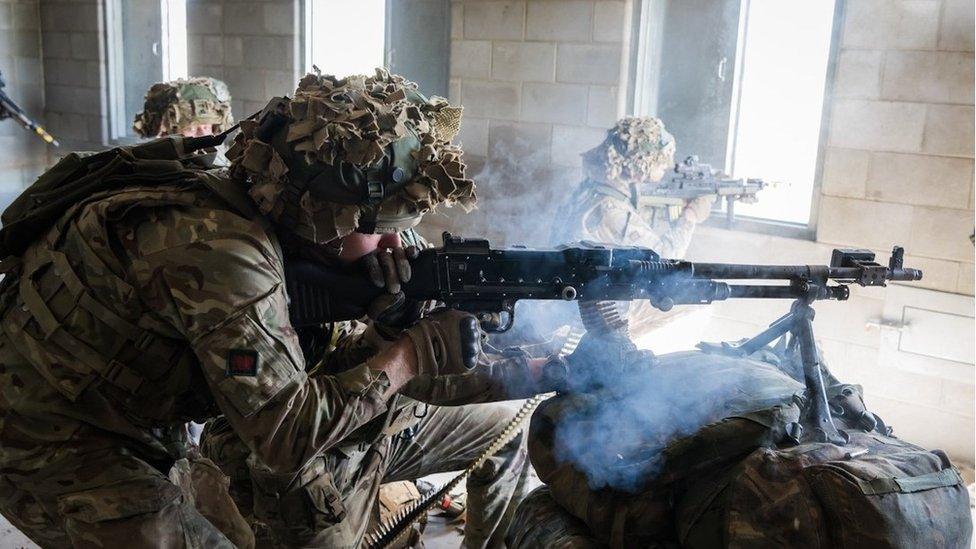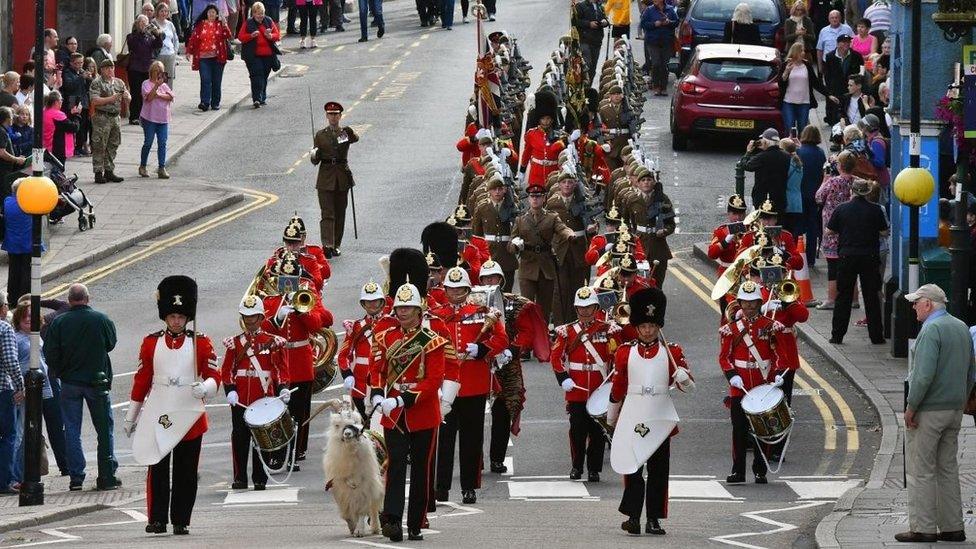The Royal Welsh: One of the Army's oldest regiments is 300
- Published

Soldiers take part in exercises around the world - including this one in Canada
One of the British Army's oldest regiments has celebrated its 300th anniversary with an event at Cardiff Castle.
The Royal Welsh was given its current name in 2006, but it was formed following a number of amalgamations going back to 1719.
Originally the 41st Regiment of Foot, it was made up of Chelsea pensioners and others incapable of normal service through disease, age or injury.
It was then based in Portsmouth.
In 1881, this regiment linked with 69th (South Lincolnshire) Regiment of Foot and was moved to Maindy Barracks in Cardiff, when it became known as the Welsh Regiment.
It was known as this until 1920, when it was renamed the Welch Regiment.
However, in 1969, it was merged with the South Wales Borderers to form the Royal Regiment of Wales (24th/41st Foot).
There was one final name change, in 2006, when it amalgamated with the Royal Welch Fusiliers to become what it is known as today.

The Royal Welsh has been given the freedom of many towns and counties - including Pembroke
The regiment has the freedom of 28 towns and local authorities, including 25 in Wales.
"Our soldiers strive every day to make the people of Wales and the United Kingdom proud and indeed they have done so across the world," said Major General James Swift OBE.
"On operations in Northern Ireland, Iraq, Afghanistan, the Balkans, Estonia, the Philippines and the African continent, the soldiers of the Royal Welsh have served, and continue to serve, the people of this country just as their forebears once did."
A Warrior Infantry Fighting Vehicle was on display outside Cardiff Castle and there were a number of events inside on Saturday.
Its history dates back to the early 18th Century when "a regiment of invalids" was formed from the growing number of pensioners at the Royal Chelsea Hospital.
In 1756, it became a marching regiment with soldiers serving in conflicts, including the French Revolutionary Wars in the West Indies in 1793.

Strike a pose: Former regimental goat Shenkin shows he is not camera shy at Cardiff Castle in March 2000
After the move to Maindy Barracks in 1881, the regiment continued to serve all over the world, earning 18 major battle honours in the following 100 years.
Soldiers fought in the first and second world wars and the Korean war in 1952, before the Royal Regiment of Wales was formed in 1969, with Prince Charles its first colonel-in-chief.
It was one of the first regiments in Northern Ireland as The Troubles escalated.
The Royal Welsh was then formed in 2006 and in its history, has gained 244 battle honours, with 43 soldiers receiving Britain's highest award for valour - The Victoria Cross.
But perhaps the most recognisable face is that of the regimental goat - which leads out the national rugby team for matches at the Principality Stadium.

Royal Welsh battalions go on tours around the world
- Published7 March 2018

- Published11 June 2015